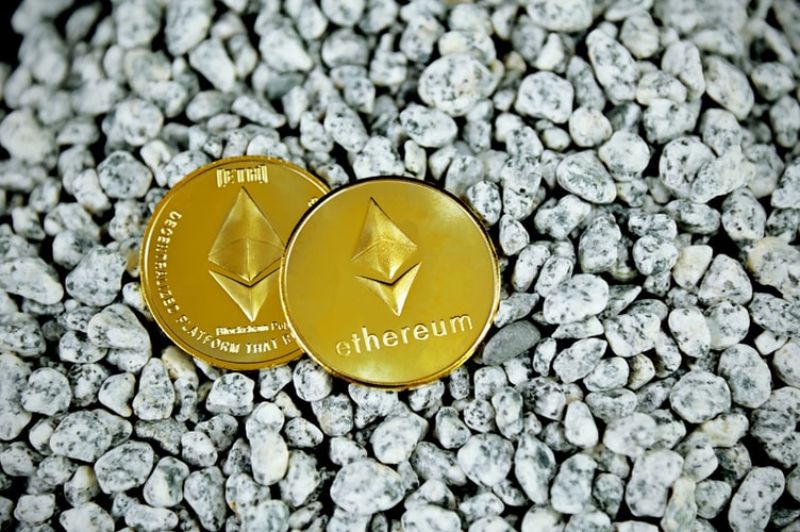Guide to ADA and Cardano: What is Cardano and Its Boom (Cardano News)

Ethereum
Cardano News: Cardano’s ADA is the world’s third most popular cryptocurrency, up 7,400% year over year. So why is it called the “Ethereum Killer”? Let’s find out. Block chain and cryptocurrency started with Bitcoin (BTC), which took the boom in the world in 2009 when the mysterious and pseudonym Satoshi Nakamoto introduced it. Due to its unique design and the fact that Bitcoin is the first, cryptocurrency has become extremely popular as an alternative store of value.
Then came Ethereum in 2015. Ethereum’s key new features are creating smart contracts, which help speed up digital payments and automatically execute transactions when certain conditions are met. As a result, Ethereum has grown into a massive network and has become a hotbed for decentralized finance (Defi) rather than fungible tokens. Today, Cardano is one of the most famous blockchain platforms after Bitcoin and Ethereum. However, this has not always been the case.
About a year ago, Cardano’s native ADA cryptocurrency had fallen to an all-time high of less than $ 0.02. But several things have happened in the past year. ADA has grown almost 7,400% since then. As a result, Cardano’s ADA coin is the world’s third-largest cryptocurrency by market capitalization after Bitcoin and Ethereum’s ETH at the time of publication.
Let’s take a nearer look at the Cardano project, what it is and what the future holds for this so-called third-generation blockchain.
Table of Contents
1. What is Cardano, and how is it different from other blockchain platforms?
Cardano is a public and open-source blockchain for creating and executing smart contracts and other decentralized protocols. The project built from the ground up by a team led by Charles Hoskinson, co-founder of Ethereum. Unlike many blockchains, Cardano didn’t start with a whitepaper. However, it was the first blockchain to be peer-reviewed and developed by academic experts in the field.
2. Blockchain technology before Cardano (Cardano News)
Hoskinson and others have been very vocal about the shortcomings of the Bitcoin and Ethereum blockchains.
Bitcoin created to remove a central authority in the control of transactions. Because of its simple design, it was very safe. However, the Bitcoin blockchain was not modifiable and had little use outside of payments. Bitcoin is also known as the first generation blockchain.
Ethereum commonly refers to as the second-generation blockchain. Ethereum found in 2015 as a platform for the provision of smart contracts and decentralized applications. It enabled users to exchange money, property, stocks, or other valuables clearly without the need for a central authority. However, Ethereum has encountered issues such as high gas loads and scalability.
Cardano is part of what is known as the third generation of blockchain technology, which includes platforms such as Polkadot and Cosmos. In addition to scalability, third-generation platforms like Cardano are also trying to solve the interoperability and sustainability issues that have affected previous generations.
3. The beginnings of Cardano (Cardano News)
Hoskinson started Cardano in 2014 with former Ethereum colleague Jerry Wood after leaving Ethereum.
Cardano is supported by the foundation of the same name, supporting research and development of the protocol and its community. The development of the Cardano project led by the NGO Input Output Hong Kong (IOHK). Hoskinson also heads the IOHK. In addition, the project engaged leading scientists at several universities around the world to review their work before presenting Cardano to the world.
In 2017, Cardano launched its native ADA cryptocurrency, named after 19th-century mathematician Ada Lovelace, child of Lord Byron. Lovelace considers as one of the world’s first computer programmers, as she was the first to publish her idea of a machine algorithm for a computer-like “scan engine.” In addition, the Cardano project itself is named after the Italian polymath Gerolamo Cardano.
4. Cardano’s philosophy (Cardano News)
Cardano was different from other blockchain projects from the start. Rather than publishing a white paper, Cardano adopted unique design principles, engineering best practices and opened avenues for further exploration to achieve its goals. With this decision, Ethereum’s challenger gained worldwide fame in just a few short years. In addition, the project remains completely open-source and not patented.
5. Cardano blockchain architecture: CSL and CCL
The Cardano blockchain consists of two layers, the Cardano Settlement Layer (CSL) and the Cardano Compute Layer (CCL), which separate Cardano from the classic smart contract platform. Ethereum uses a single-tier architecture, resulting in network congestion, slow transaction speeds, and high gas fees. Cardano tries to solve these problems through CSL and CCL.
The CSL layer facilitates peer-to-peer transactions such as token transfer between users. The CSL is Cardano’s balance sheet register. Using a proof-of-stake consensus algorithm (Ouroborosprotocol) to produce new blocks and confirm transactions, Cardano aims to improve Bitcoin’s proof-of-work protocol.
In the CCL layer, Cardano stands out. It is because CCL supports the computational requirements of the blockchain and enables the implementation of smart contracts.
This layer functions separately from the settlement layer to provide flexibility if changes are required. In addition, the off-chain protocol allows for greater flexibility in data storage and an access model that enables users to create custom rules when reviewing transactions.
6. Understand the basic concepts
THE EVIDENCE OF THE OUROBOROS PROBLEM
Ouroboros is Cardano’s consensus algorithm. It’s a proof of stake model with a twist. Proof of Stake allows nodes with the highest number of bets (or coins) to create trading blocks. Ouroboros algorithm works very differently.
The Cardano team did with the Ouroboros to divide physical time into epochs made up of slots that are just fixes periods. These so-called epochs function in a ring, with which a generation ends; another is online. It will help reduce grid congestion and reduce gas costs.
The epochs are further sub-divided, each with a slotted conductor selected by other nodes. These slots leaders see the creation and confirmation of transaction blocks add to the blockchain. If the leader of the chosen location cannot create one deal block at a time, the next leader of the location will try.
Entry endorsers also review transaction blocks submitted by slots maintainers, the second group of stakeholders to execute the Ouroboros protocol. These entry endorsers are also chosen based on the number of ADA tokens deployed on the network.
The Ouroboros mining process eliminates the need for a high-energy proof-of-work protocol that has created controversy and negative publicity related to the Bitcoin and Ethereum networks.
PROOF OF STAKE
Proof of the commitment would be the consensus mechanism that will replace the protocol provided by Bitcoin to prove employment. A proof-of-work protocol permits crypto miners to invest computing power to see who has chosen to mine a block of transactions. The successful miner is satisfies with the native part of the network.
The Proof of Stake, a protocol Ethereum is working on with its Ethereum 2.0 development, picks nodes based on the number of coins they have staked. After that, executives gets selects randomly and must create and approve blocks of transactions on the network.
Cardano’s goal is to use the Ouroboros protocol to make this selection as random and secure as possible. With the recent update of the ‘Mary’ platform, the developer can finally create tokens on the Cardano blockchain, just like the cryptocurrency ADA. Users can store their digital assets in their Daedalus wallet or their ultra-light Yoroi wallet so that users can monitor the digital assets in which they are interested.
MARY HARD FORK: A MULTI-BRAND BLOCKCHAIN
Hard forks are significant changes to the source code of a blockchain protocol that cause significant changes because the previous protocol is no longer functional.
Cardan’s recent Mary Hard Fork upgrade brought the network to a new phase. The upgrade, named after “Frankenstein” author Mary Shelley, aims to take the Cardano blockchain from the era of decentralization (Shelley) to a new multi-asset era that Cardano calls the Goguen phase. In Goguen, named after computer scientist Joseph Goguen, Cardano becomes a protocol that allows developers and businesses to create custom tokens over the network.
The hard fork combinatorial went live on March 2 and allows Cardano to be more widely accepts by the Defi community. As a result, Crypto enthusiasts looking for greater scalability for their DeFi projects, non-fungible tokens (NFTs), or stable coins can now upgrade to Cardano.
Mary is an integral part of IOHK’s growth plan. The upgrade promises to remove high gas fees, ensure a more scalable and secure network, and strengthen Cardano’s reputation as a potential “Ethereum killer.”
According to Goguen, the next step in Cardano’s roadmap(Cardano News) for future development is the basho era, which aims to improve interoperability and scalability. Finally, the last era will be Voltaire, who will set up a voting and financial system for governance.
7. Teams behind Cardano (Cardano News)
IOHK: Input Output Hong Kong is a not-for-profit company that supports Cardano. By signing a multi-year contract with the blockchain company Emurgo, the company aims to promote better financial inclusion. Hoskinson has spoken at length about Cardano’s use cases in Africa and his ambitions to help the world’s poor people.
THE CARDANO FOUNDATION: Cardano Foundation is a self-governing Switzerland-based not-for-profit organization aiming to “standardize, protect and promote” Cardano technology by working with other companies and helping to shape laws that the Cardano- Industry concern. Blockchain and cryptocurrency.
EMURGO: Emurgo is an established partner of the Cardano project and remains its trading and venture capital arm. You can discover some of his projects here.
8. What future for the Cardano project?
High fees were a limiting factor in the DeFi space. Ethereum’s gas charges have made them an expensive proposition as the appeal of these locked-down drive projects grows. Cardano wants to fix this and more with its Mary upgrade.
Cardano developers can now generate custom tokens or import projects from other blockchains into the Cardano network. It could be beneficial for new and interesting projects such as DeFi and NFT ecosystems.
Will Cardano’s Mary Promote finally position the One-Time Undergoes a serious Ethereum challenger? While Cardano is innovative, other blockchain platforms – including Ethereum – are in the race for issues like scalability and sustainability. (Cardano News)
However, in the tech world, it’s not necessarily the best technology that wins, but the one with the best business strategy. Time will tell if Cardano’s Africa and Fortune 500 strategy will prevail.
See Related Article: How Bitcoin Is Becoming A Digital Phenomenon




